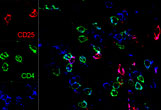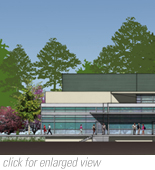 |
||||
|
Scientists use biosafety labs to safely and effectively study infectious and toxic materials. These state-of-the-art labs are designed not only to protect researchers from contamination, but also to prevent microorganisms from entering the environment. There are four biosafety levels (BSLs) that define proper laboratory techniques, safety equipment, and design, depending on the types of agents being studied. Brief descriptions can be found below. More complete information is available at the CDC website. BSL-1 labs are used to study agents not known to consistently cause disease in healthy adult humans. The work is generally conducted on open bench tops using basic safety procedures. No special equipment or design features are required. Comment: A typical BSL-1 lab is a high school biology laboratory. BSL-2 labs are used to study moderate-risk agents that pose a danger if accidentally inhaled, swallowed or exposed to the skin. Safety measures include access controls, specialized training for laboratory employees, personal protective equipment such as gloves and eye wear as well as biosafety cabinets, hand-washing sinks and decontamination of waste material. Comment: Most of the TNPRC is BSL-2 lab environment, as are hospital laboratories. BSL-3 labs are used to study agents that can be transmitted through the air and cause serious or potentially lethal disease. Research precautions include those indicated for BSL-2 labs as well as respiratory protection, specialized ventilation and decontamination systems and showering when entering and exiting the facility. Comment: The TNPRC has had an operational BSL-3 facility for more than 15 years. BSL-4 labs are used to study agents that pose a high risk of life-threatening disease for which no vaccine or therapy is available. Lab personnel are required to wear full-body, air -supplied “space suits” when working in the facility. The labs incorporate all BSL-3 safety features as well as having air-tight door seals and occupy safe, isolated zones within a larger building. Comment: The Tulane Regional Biosafety Laboratory is NOT a BSL-4 laboratory. The closest BSL-4 laboratories are at the Centers for Disease Control (CDC) in Atlanta, Georgia, and at the University of Texas Medical Branch, Galveston, Texas.
|

Xavier Alvarez
|
©2013 Tulane University |
